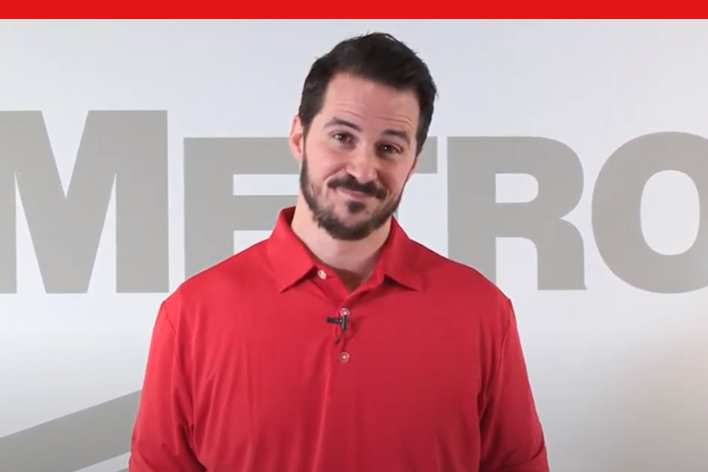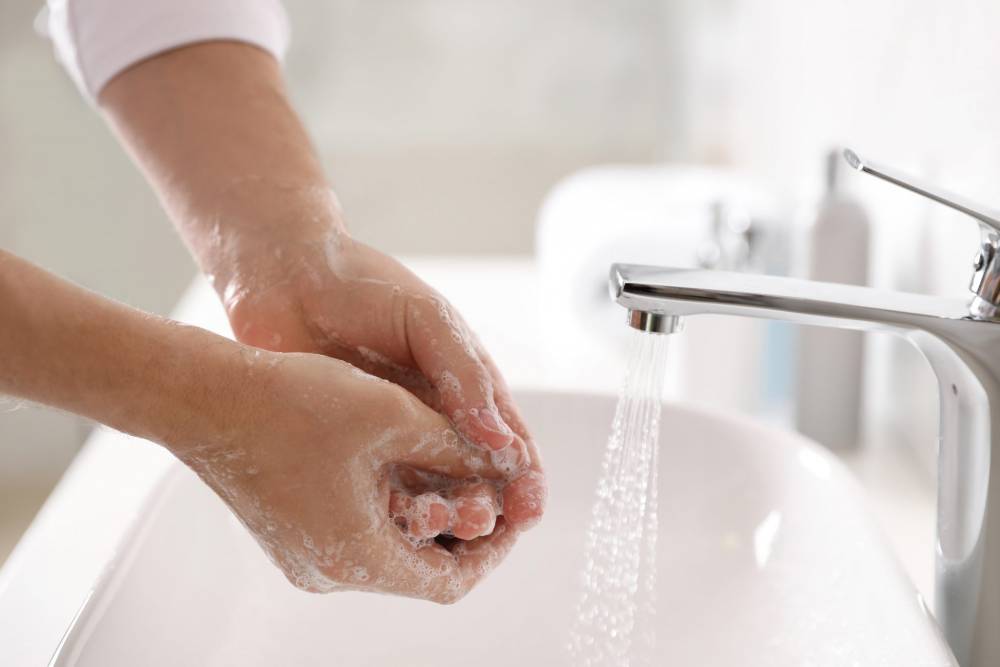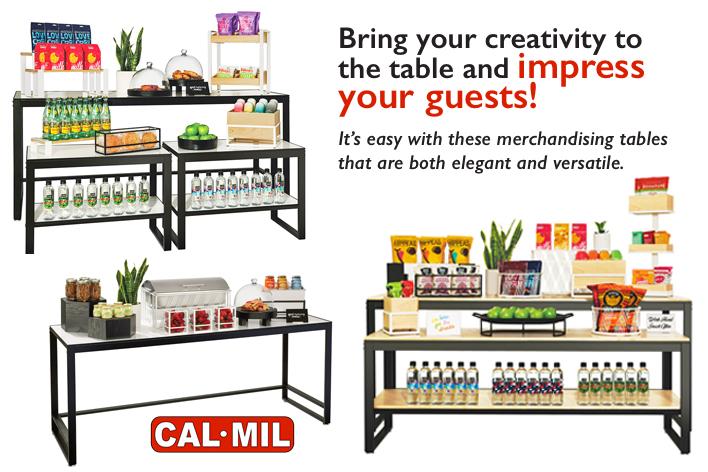
Restaurant operators face plenty of ongoing challenges, such as increasing traffic, training and retaining staff, and managing inventory levels and operational costs. Yet, one major and often overlooked challenge is the comfort and safety of the kitchen environment and the team that maintains it. Improperly designed commercial kitchens are hot places to work which can not only affect the well-being of the building but can also lead to severe health problems and lower productivity levels of employees. Hot kitchens can impact the health of staff and guests’ dining experiences, along with costly employee turnover. Understanding the roles that exhaust hoods, fans, and make-up air units play in controlling air quality and replacing fresh air in kitchen and dining spaces is critical in overcoming uncomfortable kitchen environments and overall business success.
Considering the Consequences
ASHRAE research suggests an ideal kitchen environment should be between 70°F and 75°F with 50% relative humidity. In poorly designed commercial kitchens, temperatures can reach or exceed 100°F, especially when working in front of certain appliances such as open grills and pizza ovens and in warmer climates where controlling indoor temperatures is an even greater challenge. Employees working in excessive conditions, such as hot kitchens, have incurred various health related issues, including heat rashes, heat exhaustion, and even heat stroke—particularly when exposed to hot and humid environments over long periods.1 Plus, overly hot conditions can result in frequent absences, poor work performance, and reduced productivity, leading to poor service and operational inefficiencies.2
Food integrity also suffers when commercial kitchen temperatures are not maintained at ideal levels. Consider how hot environments can cause foods like cheese and meat on a charcuterie board to sweat and certain foods to lose crispiness and get soggy. With food costs and supply chain issues mounting, throwing food away is an expensive repercussion of an overly hot environment.
Another consequence of excessive kitchen temperatures is lower employee retention resulting in hefty costs related to recruiting new hires and training restaurant staff. According to figures from the Society for Human Resource Management, Investopedia, and The Center for Hospitality Research at Cornell, an hourly employee can end up costing a company $3.5k in turnover costs and more than $5k per person for a typical front-line employee.3 In addition, the Recruiting and Turnover Report indicates that the average cost of turnover per manager in the restaurant industry is upwards of $13k.4 Maintaining top talent is invaluable to a restaurant’s operation, saving thousands in recruitment costs and providing consistent service and optimal front- and back-of-house staff performance.
Solutions for Preventing Uncomfortable Kitchen Spaces
During the design phase of any commercial kitchen project, the restaurant’s kitchen ventilation specialist ensures that correct ventilation equipment is selected and configured to perform as expected while working together as one seamless system. Considerations are based on individual appliance requirements, kitchen size and dining spaces, and other specific ventilation needs such as heating, cooling, and dehumidification capabilities. Renovating an existing kitchen is another situation where owners could adjust their current ventilation systems. Upgrading commercial kitchen equipment is a wise investment for improving the air quality and balancing internal temperatures of existing kitchen spaces and, in turn, enhancing a building’s health and the wellness of staff and guests.
Let’s consider a few equipment solutions for combatting uncomfortable kitchens:
Exhaust Hoods & Exhaust Fans
Kitchens are hotspots for contaminated air. Cooking produces grease, steam, smoke, heat, and in some cases, other byproducts such as nitrogen dioxide and carbon monoxide. Exhaust hoods and fans help to capture, contain, and remove heat and toxins from kitchen environments. Depending on individual kitchen design requirements, various hood and fan types are available, with energy-saving options.
A kitchen ventilation expert can help if issues arise with an existing hood. It’s essential to determine if the hood has capture issues preventing the hot air coming up and off the appliances from being vented outside. Capture issues can be caused by numerous things (i.e., lack of make-up air, not enough exhaust, not enough overhang, diffusers, and other air currents near the hood, etc.), and hoods should be inspected by a qualified ventilation expert to determine the issue.
Make-Up Air Units
Once effluent air is safely removed, fresh outside air is required to replace the exhausted air. Selecting the right make-up air units (MAUs) configured to the specific commercial space and geographic location is important. For instance, in warmer climate areas, choosing an MAU without cooling capabilities can lead to significant issues. Such units may bring in high volumes of hot and humid summer make-up air directly into the kitchen, often positioned over the cooking staff's heads.. When combined with the radiated heat emitting from hot appliances, this leads to an uncomfortable kitchen environment that affects the health and productivity of staff. In this situation, an MAU with cooling capabilities must cool the hot outside air before it reaches the cooking space.
Not all MAUs with cooling capacities are engineered the same. Some units do not begin cooling until the outdoor air temperature reaches at least 85°F, which means that during temperatures between 75°F and 84°F, they bring hot outside air into the kitchen. In contrast, Accurex makeup air units are designed to start cooling when the outside air temperature reaches 75°F, making them an ideal solution for bringing comfort back to kitchens.
While the initial investment in cooling-capable MAUs may seem costly, utilizing a demand control kitchen ventilation (DCKV) system can offset these expenses. This system allows you to reduce your exhaust and make-up air volume during times of low cooking load, which saves energy and reduces the cost of utilities. Choosing an MAU that can reduce the fan speed by at least 50% can result in up to 88% electrical savings. In addition, exhaust hoods outfitted with hood-mounted temperature sensors respond to temperature changes up to five times faster than duct-mounted sensors, delivering quicker airflow modulation and more efficient control and operation.
Dedicated Outdoor Air Systems
Dedicated Outdoor Air Systems (DOAS) are the ideal solution for optimal employee and patron comfort for commercial kitchens requiring a higher percentage of fully conditioned outside air. Unlike other systems, DOAS delivers complete temperature and humidity control before the air enters the kitchen and dining spaces. In some cases, a single DOAS unit can replace both the make-up air and rooftop units while meeting ASHRAE’s recommendation that commercial kitchen environments be between 70°F and 75°F with 50% relative humidity.
One of the significant advantages of DOAS over MAUs is their ability to remove excessive humidity, a common issue in commercial kitchens that can lead to problems like indoor rain effects from duct sweating, increased viral transmission, and the growth of mold spores. However, like MAUs, DOAS also allow for variable volume control for additional operational and energy efficiencies, saving money and energy with exceptional turndown capabilities. Depending on the venue, DOAS. can be set up for either partial recirculation or 100% outside air, which can provide tempering in unoccupied mode with recirculated air. By utilizing high turndown furnaces for heating and inverter scroll compressors for cooling, Accurex DOAS units provide a consistent temperature throughout the space to avoid large swings that can lead to discomfort. By implementing DOAS in commercial kitchens, restaurant operators can achieve superior comfort levels for both staff and guests, improve indoor air quality, and promote energy efficiency in their operations.
The Accurex team of qualified ventilation experts is standing by to help select the right ventilation solutions to alleviate uncomfortable and unhealthy kitchen environments. Learn more about Accurex solutions for your operation.
1 A restaurant owner’s safety guide to keeping employees cool during summer heat, fastcasual.com
2 Does Indoor Air Quality in Restaurants Really Matter?, uHoo Business
3 The Real Costs of Recruitment, Society for Human Resource Management, April 11, 2022; The Cost of Hiring a New Employee, Investopedia, April 8, 2022; and Employee Turnover: How to Lower Restaurant Labor Costs, Rewards Network Blog.
4 The Cost of Restaurant Employee Turnover, restauranttechnologyguys.com
5 ASHRAE Position Document on Infectious Aerosols, 4/14/2020




